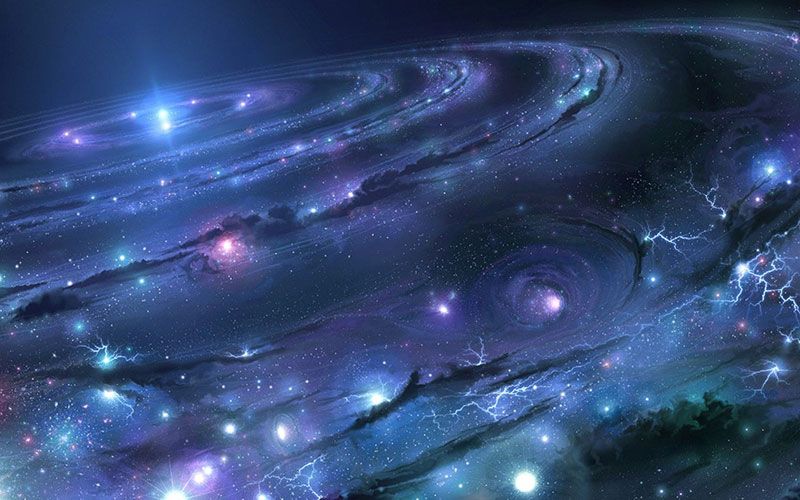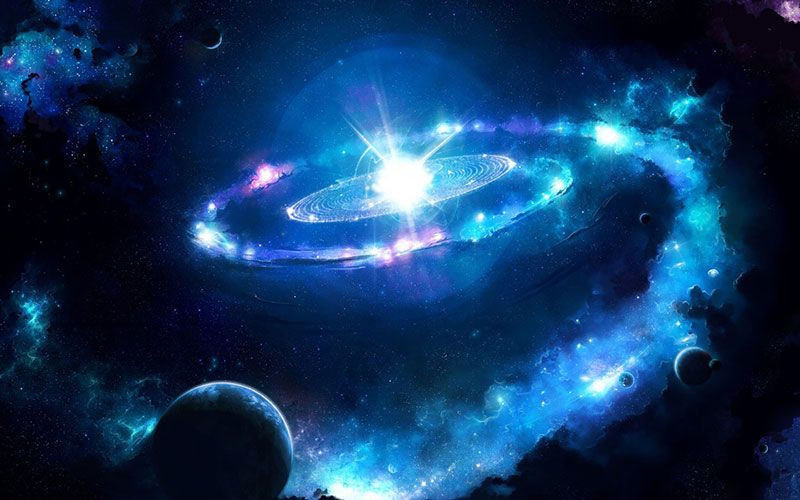Who created the universe?
The Book of Spirits was the first book in the codification of Spiritism done by Allan Kardec. Based on it, it's possible to understand an explanation of the creation of the Universe through the lens of Spiritism.

Photo: Allbreaknews.com
The meaning of the Universe, in the book, is explained as follows:
“The Universe comprises the infinity of worlds we see and those we don't, all animated and inanimate beings, all the celestial bodies that move in space, as well as the fluids that fill it.”
The Universe is a work of God and it's not eternal like God is. Being eternal means it had no beginning and will have no end. On the other hand, the physical Universe is infinite.
However, in response to the question “How did God create the Universe?”, the answer is that it was through God's will. The topic remains somewhat unclear for Spiritists.
In the book “Genesis,” also codified by Allan Kardec, it's possible to gain a clearer understanding of the formation of the Universe and the laws and forces that govern it.
The Laws and Forces of the Universe In “Genesis,” Kardec describes how the laws and forces of the Universe work. There's an ethereal fluid that fills space and permeates all bodies. It's called ether or cosmic matter, which generates worlds and beings. It's because of this ether that the forces and laws of the Universe are unchangeable.
These forces are multiple, located according to masses. They diversify in their modes of action depending on circumstances and means. Some are known on Earth, such as:
- Gravity
- Attraction
- Magnetism
- Cohesion
- Active Electricity
All these phenomena have cosmic matter as their root. There are also movements of sound, heat, and light that are composed of this matter.
In other worlds beyond Earth, the same forces also exist.
As cosmic matter is the supreme substance that creates worlds and beings, it can also be diversified in its combinations, all governed by the same universal laws but differentiated in their effects, all designated by God in Creation.

The Various Worlds that Perpetuate the Universe The many worlds that perpetuate the Universe have the same unity of harmony and creation, and this matter also serves a variety of specific purposes. There are other types of forces unknown to human beings but present in the Universe and even on Earth.
What is Spiritism? All these forces are eternal and universal, just like the Creation of the Universe. They are inherent to cosmic fluid and operate everywhere and in everything, as Allan Kardec puts it, “governing the marvelous works of Nature wherever they are carried out, ensuring forever the eternal splendor of Creation.”
The Creation of the Universe The cosmic matter that governs the laws of the forces acting in the Universe is also used to create the material, fluidic, and vital elements of worlds. It composes all creatures:
- Mineral
- Vegetable
- Animal
- And various others
Since the Creation of the Universe was God's will, it's possible to see that He never stopped and will never stop creating.
In a part of the Universe, cosmic matter condensed into an immense nebula, animated by the universal laws governing matter, as explained earlier.
The law of attraction caused this immense nebula to assume a mass of matter isolated in space. The circular motion caused by gravitation, strictly equal due to being a consequence of a universal law, drew all molecular zones toward the center, modifying the original sphere. Through these movements, the immense nebula gained a lenticular form.
Later, new forces emerged due to this rotation:
- Centripetal force: This force gathers all parts toward the center.
- Centrifugal force: This force pushes parts away from the center.
Centrifugal and Centripetal Forces The centrifugal force predominated over the central attraction, meaning the force that pushes parts away from the center overcame the centripetal force as the nebula condensed and formed its lenticular shape.
From this centrifugal motion that pushed parts away, a new isolated mass emerged, subject to its dominion.
The first mass became the Sun, and the second became a planet, and their rotation and translation movements came into play.
The Sun assumed a spherical form. It, as a generative form, gave rise not only to one celestial body but to hundreds of worlds orbiting around it.
It's natural to assume that many suns were created, with worlds moving around them in orbits and rotating around themselves.
Therefore, planets are formed from masses of the primary matter, which is the Sun, which, based on the laws of movement, takes on the form of spheres, more or less elliptical depending on the degree of fluidity they retained. Earth is one of these planets.
Before Earth cooled down and formed a solid crust, it also generated the Moon.
Before the worlds had sufficiently cooled down to solidify, smaller masses like the Moon detached from some worlds and, due to the same laws that created the worlds, began to orbit the planets that created them.
Satellites and Other Planets
Earth created the Moon, which has a smaller mass and cooled down more quickly. The Moon didn't move far from Earth and remains suspended perpetually in its sky.
The quantity and state of a planet's or world's satellites vary based on specific conditions. Some planets in our galaxy didn't give rise to any secondary celestial bodies like Mercury, Venus, and Mars, while others like Earth, Jupiter, and Saturn formed one or more satellites.
Planet Saturn, in addition to satellites and moons, has the phenomenon of a ring surrounding it. This ring formed due to a separation that occurred at Saturn's equator, in the same way the Moon was created from Earth. The difference is that Saturn's ring formed from homogeneous molecules and then continued rotating in the same direction and at approximately the same speed as the planet itself.
This is how Kardec describes the formation, not only of our galaxy but of countless others, as the Universe itself is infinite.




